Ashlyn A. Callan
Identification of head impact locations, speeds, and force based on head kinematics
Sep 12, 2024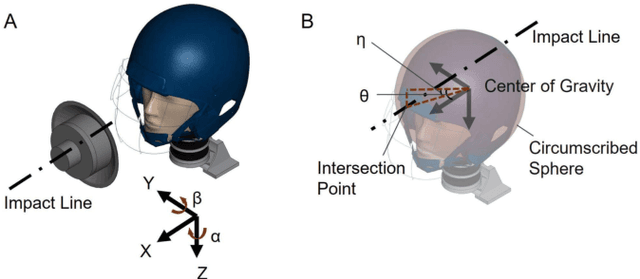
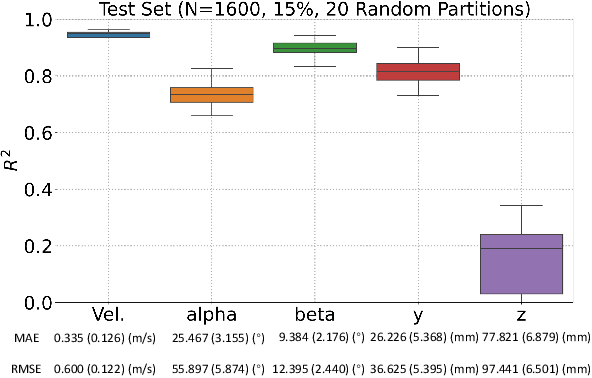
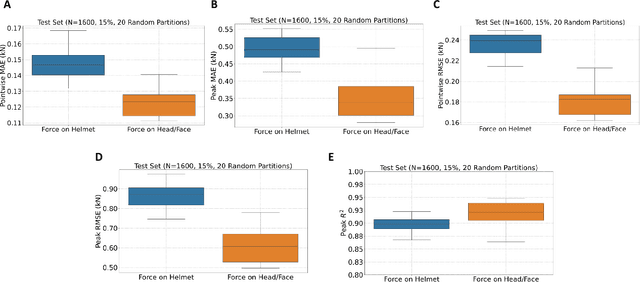
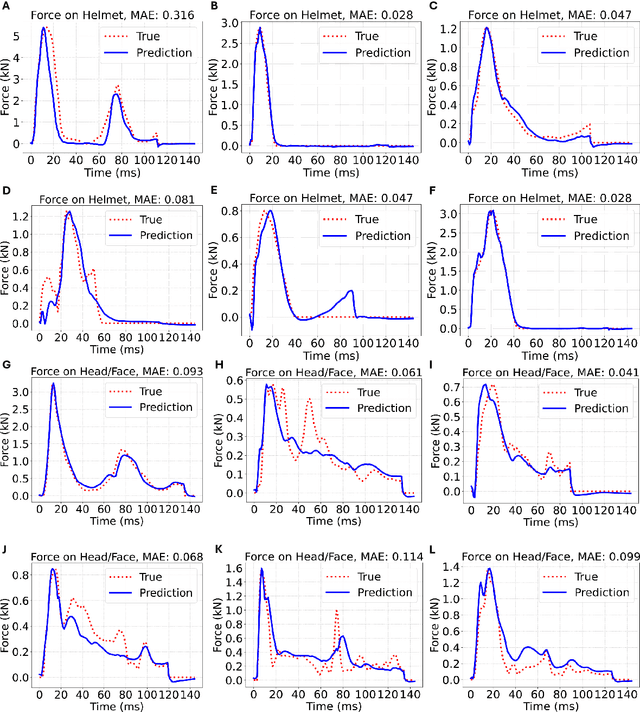
Abstract:Objective: Head impact information including impact directions, speeds and force are important to study traumatic brain injury, design and evaluate protective gears. This study presents a deep learning model developed to accurately predict head impact information, including location, speed, orientation, and force, based on head kinematics during helmeted impacts. Methods: Leveraging a dataset of 16,000 simulated helmeted head impacts using the Riddell helmet finite element model, we implemented a Long Short-Term Memory (LSTM) network to process the head kinematics: tri-axial linear accelerations and angular velocities. Results: The models accurately predict the impact parameters describing impact location, direction, speed, and the impact force profile with R2 exceeding 70% for all tasks. Further validation was conducted using an on-field dataset recorded by instrumented mouthguards and videos, consisting of 79 head impacts in which the impact location can be clearly identified. The deep learning model significantly outperformed existing methods, achieving a 79.7% accuracy in identifying impact locations, compared to lower accuracies with traditional methods (the highest accuracy of existing methods is 49.4%). Conclusion: The precision underscores the model's potential in enhancing helmet design and safety in sports by providing more accurate impact data. Future studies should test the models across various helmets and sports on large in vivo datasets to validate the accuracy of the models, employing techniques like transfer learning to broaden its effectiveness.
Denoising instrumented mouthguard measurements of head impact kinematics with a convolutional neural network
Dec 19, 2022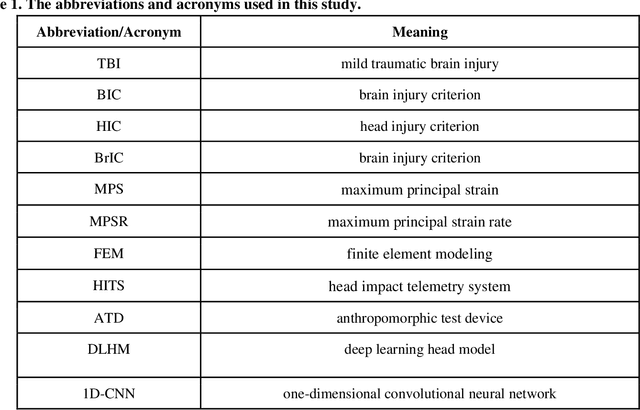
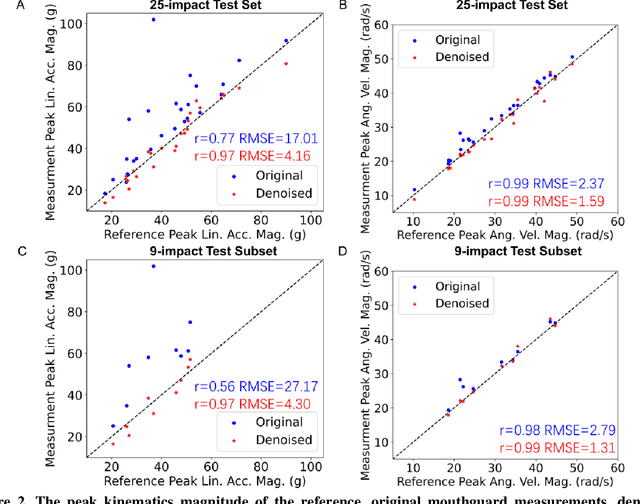
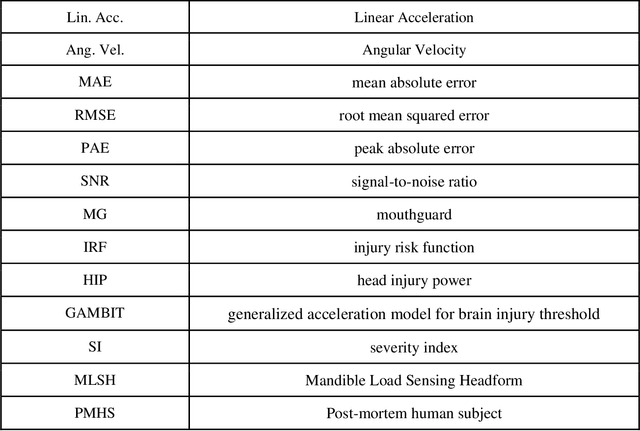
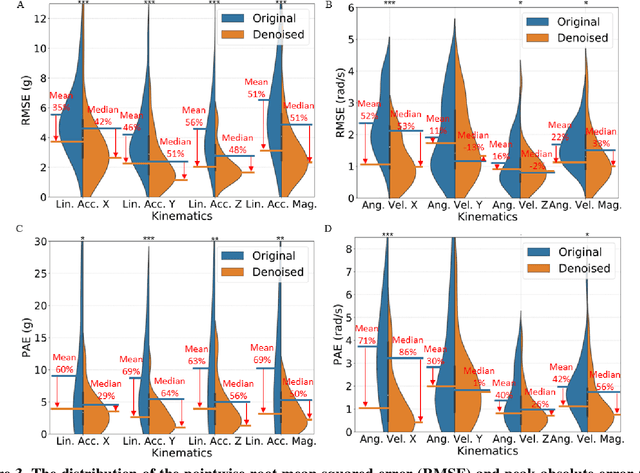
Abstract:Wearable sensors for measuring head kinematics can be noisy due to imperfect interfaces with the body. Mouthguards are used to measure head kinematics during impacts in traumatic brain injury (TBI) studies, but deviations from reference kinematics can still occur due to potential looseness. In this study, deep learning is used to compensate for the imperfect interface and improve measurement accuracy. A set of one-dimensional convolutional neural network (1D-CNN) models was developed to denoise mouthguard kinematics measurements along three spatial axes of linear acceleration and angular velocity. The denoised kinematics had significantly reduced errors compared to reference kinematics, and reduced errors in brain injury criteria and tissue strain and strain rate calculated via finite element modeling. The 1D-CNN models were also tested on an on-field dataset of college football impacts and a post-mortem human subject dataset, with similar denoising effects observed. The models can be used to improve detection of head impacts and TBI risk evaluation, and potentially extended to other sensors measuring kinematics.
 Add to Chrome
Add to Chrome Add to Firefox
Add to Firefox Add to Edge
Add to Edge